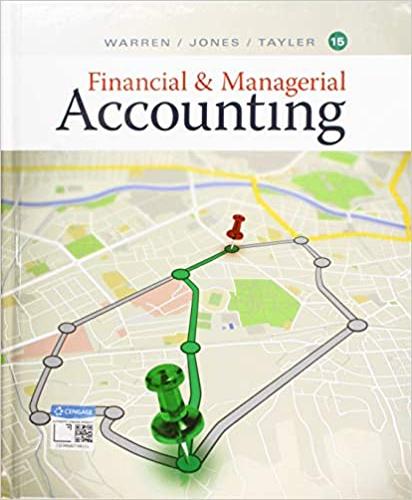Question
Plaza Corporation purchased 70 percent of Square Company's voting common stock on January 1, 20X5, for $300,300. On that date, the noncontrolling interest had a
Plaza Corporation purchased 70 percent of Square Company's voting common stock on January 1, 20X5, for $300,300. On that date, the noncontrolling interest had a fair value of $128,700 and the book value of Square's net assets was $393,000. The book values and fair values of Square's assets and liabilities were equal except for land that had a fair value $14,000 higher than book value. The amount attributed to goodwill as a result of the acquisition is not amortized and has not been impaired.
| PLAZA CORPORATION AND SQUARE COMPANY Trial Balance Data December 31, 20X9 | ||||||||||||||
| Plaza Corporation | Square Company | |||||||||||||
| Item | Debit | Credit | Debit | Credit | ||||||||||
| Cash and Receivables | $ | 90,300 | $ | 94,000 | ||||||||||
| Inventory | 219,000 | 128,000 | ||||||||||||
| Land, Buildings, & Equipment (net) | 272,000 | 252,000 | ||||||||||||
| Investment in Square Company | 305,252 | |||||||||||||
| Cost of Goods & Services | 180,000 | 130,000 | ||||||||||||
| Depreciation Expense | 35,000 | 25,000 | ||||||||||||
| Dividends Declared | 30,000 | 5,000 | ||||||||||||
| Sales & Service Revenue | $ | 320,000 | $ | 220,000 | ||||||||||
| Income from Square Company | 59,152 | |||||||||||||
| Accounts Payable | 59,000 | 26,000 | ||||||||||||
| Common Stock | 195,000 | 163,000 | ||||||||||||
| Retained Earnings | 498,400 | 225,000 | ||||||||||||
| Total | $ | 1,131,552 | $ | 1,131,552 | $ | 634,000 | $ | 634,000 | ||||||
On January 1, 20X9, Plaza's inventory contained $46,000 of unrealized intercompany profits recorded by Square. Square's inventory on that date contained $15,000 of unrealized intercompany profits recorded on Plazas books. Both companies sold their ending 20X8 inventories to unrelated companies in 20X9. During 20X9, Square sold inventory costing $56,000 to Plaza for $81,000. Plaza held all inventory purchased from Square during 20X9 on December 31, 20X9. Also during 20X9, Plaza sold goods costing $70,800 to Square for $118,000. Square continues to hold $40,120 of its purchase from Plaza on December 31, 20X9. Assume Plaza uses the fully adjusted equity method. Required: a. Prepare all consolidation entries needed to complete a consolidation worksheet as of December 31, 20X9. (If no entry is required for a transaction/event, select "No journal entry required" in the first account field.)
b. Prepare a consolidation worksheet as of December 31, 20X9. (Values in the first two columns (the "parent" and "subsidiary" balances) that are to be deducted should be indicated with a minus sign, while all values in the "Consolidation Entries" columns should be entered as positive values. For accounts where multiple adjusting entries are required, combine all debit entries into one amount and enter this amount in the debit column of the worksheet. Similarly, combine all credit entries into one amount and enter this amount in the credit column of the worksheet.)
Step by Step Solution
There are 3 Steps involved in it
Step: 1

Get Instant Access to Expert-Tailored Solutions
See step-by-step solutions with expert insights and AI powered tools for academic success
Step: 2

Step: 3

Ace Your Homework with AI
Get the answers you need in no time with our AI-driven, step-by-step assistance
Get Started


